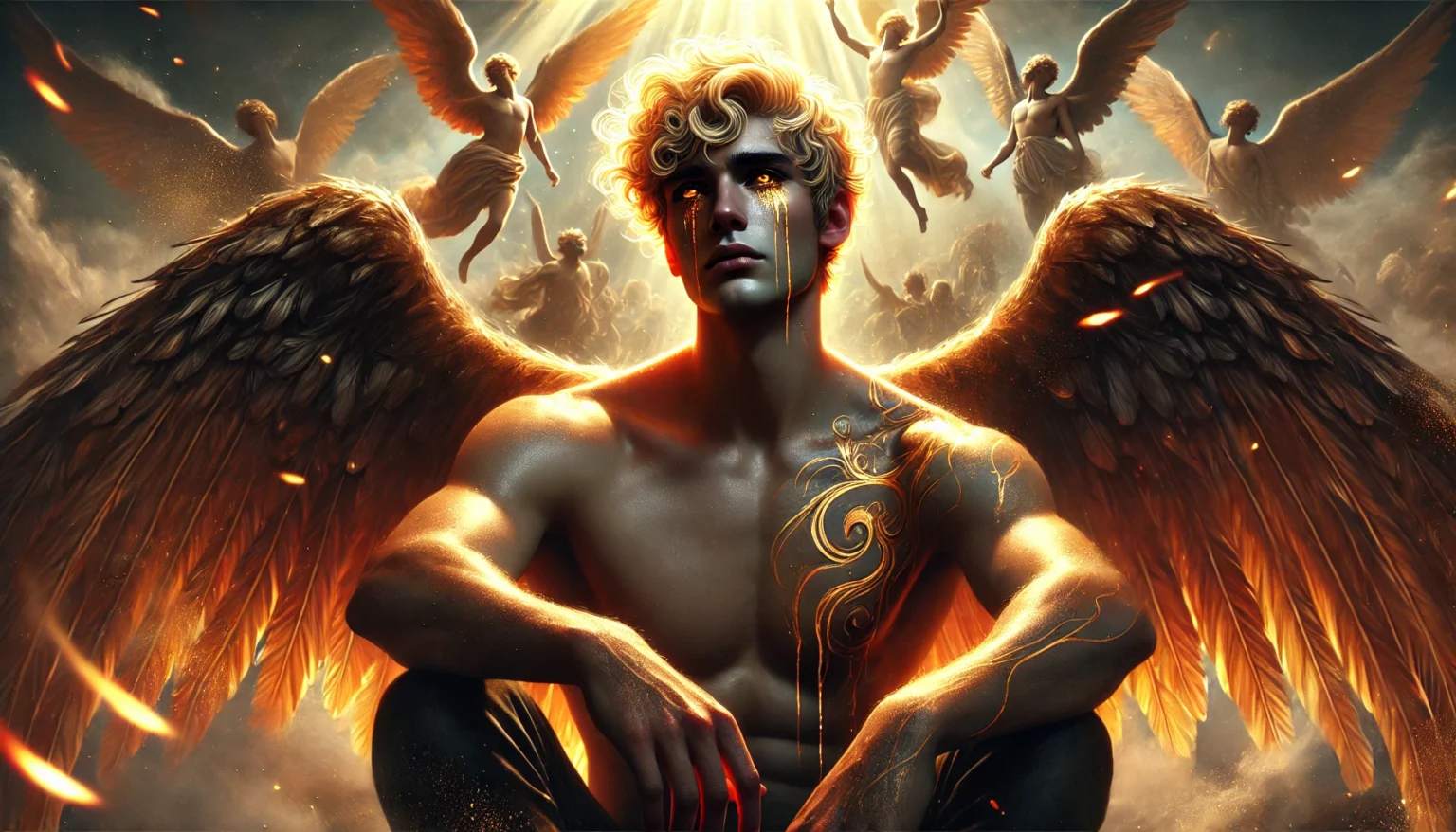Art has long been a medium for challenging norms, questioning beliefs, and redefining perspectives. One painting that continues to stir conversation is Fallen Angel—a mesmerizing yet provocative depiction of Lucifer unlike anything seen before.
Unlike traditional portrayals of Satan as monstrous or grotesque, Cabanel presents a being of ethereal beauty, his expression filled with sorrow, defiance, and a hint of vulnerability. This reimagining of the biblical figure was groundbreaking and, unsurprisingly, controversial. But why does this painting remain so captivating even today? Let’s explore the artistic brilliance and controversy behind Cabanel’s masterpiece.
A Lucifer Like No Other
Throughout history, depictions of Lucifer have often painted him as a terrifying entity, marked by horns, scales, and demonic features. Cabanel, however, took a bold and radical approach in his Fallen Angel painting. Instead of portraying evil incarnate, he crafted a figure of tragic beauty—an angel, not yet fully corrupted, but cast aside from divine grace.
Lucifer, as painted by Cabanel, is young and strikingly handsome. His golden curls, athletic build, and glowing skin exude celestial perfection. But it’s his expression that defines the painting’s emotional power. His eyes brim with unshed tears, smoldering with a mixture of wounded pride, sorrow, and lingering resentment. It is the face of someone who has tasted heaven and lost it forever.
Cabanel’s Lucifer is not a villain, but a fallen hero—exiled, yet refusing to be broken. This fresh take on the character blurred the lines between good and evil, forcing viewers to see Lucifer in a more humanized, almost sympathetic light.
The Artistic Mastery Behind Fallen Angel
Cabanel was known for his exquisite attention to detail, and Fallen Angel is a testament to his technical prowess.
1. Dramatic Contrast & Composition
The contrast between light and shadow is a key element of the painting’s power. The radiant glow on Lucifer’s body highlights his celestial origins, while the shadowed background—a gathering of triumphant angels—emphasizes his isolation. This stark visual divide enhances the emotional weight of his exile.
2. A Face That Tells a Story
Cabanel’s precision in capturing facial expressions is what makes this painting so haunting. Lucifer’s clenched jaw, furrowed brow, and slightly parted lips create a striking emotional depth. It’s a face filled with defiance but also despair—an angel who refuses to accept his fate.
3. The Sensuality of Rebellion
One of the most intriguing aspects of the Fallen Angel painting is the undeniable sensuality of Lucifer’s form. His bare chest, sculpted physique, and soft golden curls make him appear almost too perfect, too alluring. This depiction wasn’t accidental—Cabanel intentionally blurred the line between celestial beauty and human temptation, making Lucifer a figure that both fascinates and unsettles.
Why Was Fallen Angel So Controversial?
While modern audiences admire the painting for its artistic brilliance, 19th-century critics were divided. The controversy surrounding Fallen Angel stemmed from several key elements:
1. The Humanization of Lucifer
Traditionally, Lucifer was portrayed as a monstrous figure of evil. By presenting him as heartbreakingly beautiful and deeply emotional, Cabanel challenged religious conventions, making viewers question whether his fall was truly justified.
2. The Sensuality of Sin
Cabanel’s Lucifer is undeniably seductive. His flawless form, combined with his sorrowful expression, creates an aura of tragic allure. Some critics saw this as dangerously romanticizing rebellion—a notion that was unsettling for conservative audiences.
3. A New Narrative of Rebellion
Lucifer’s downfall is often framed as a cautionary tale of pride and arrogance. But in this depiction, his rebellion feels less like an act of defiance and more like an inevitable consequence of ambition. This reinterpretation of his fall from grace was both compelling and controversial.
The Enduring Legacy
More than a century later, Fallen Angel continues to captivate and inspire. From digital art to tattoos, reinterpretations of Cabanel’s work appear across modern culture, proving its lasting impact.
This painting invites endless interpretation. Is it a celebration of defiance? A lamentation of loss? A portrait of misunderstood ambition? Perhaps that’s why Fallen Angel remains one of the most beloved and debated works of 19th-century art.
In the end, Cabanel didn’t just paint Lucifer—he redefined him. And in doing so, he created an artistic masterpiece that still speaks to us today.



